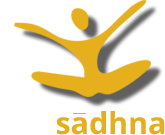The southern veena consists of a large body hollowed out of a block of wood, generally jackwood. The stem of the instrument is also made of the same kind of wood and the bridge is placed on the flat top of the body. The neck is attached to the stem and is usually carved into some weird figure like the head of a dragon. Another gourd, smaller in size than the rounded part of the body, is fixed underneath the neck and forms a kind of rest or a support for the instrument. Twenty four metallic frets, one for each semitone of two octaves, are fixed on the stem by means of a resinous substance. The frets are arcs made of bell metal or of steel.
The veena has seven strings in all. Four of them are main strings that pass over the feet and are attached to the pegs on the neck. The three side strings are used for the drone and the rhythmic accompaniment. These strings pass over an arched bridge made of brass. They lie flat over the top of the body and are secured to the main bridge. To play the veena, the performer sits cross-legged upon the floor and holds the veena in front. The small gourd on the left touches the left thigh, the left arm passing round the stem so that the fingers rest easily upon the frets. The main body of the instrument is placed on the ground, partially supported by the right thigh.
Sometimes the performer sits cross-legged upon the ground as before but holds the veena vertically by M. S. Subbulakshmi, a renowned singer with the placing the body of the instrument in front of him or on his lap. This method of playing is more popular in Andhra Pradesh. Generally, the various parts of the veena, such as the neck, the stem and the main body are made ready separately and joined together later. But there is a type of instrument called the ekavada veena where the whole length, comprising the neck, stem and bowl, is carved out of a single piece of wood. This type of veena is greatly prized. Its tonal quality and volume are richer than in the case of the ordinary veena.
The southern veena as we know it today was brought into use by a ruler of Tanjavoor called Raghunatha Naik and his Prime Minister Govinda Dikshitar who first constructed a veena with twenty-four fixed frets. Before this the veena had less than twenty movable frets which had to be adjusted as in the northern sitar. The fixing of the frets (twelve for each octave) paved the way for the development of the famous scheme of seventy-two, melakartas of the Karnatak system. The style of presenting Karnatak music has grown largely round the veena technique and many of the noted south Indian musicians, musicologists and composers of the past have been veena players.
The tanam, a creative type of music in the Karnatak system, is the elabora¬tion of a raga in free rhythm in slow, medium and fast tempo. The tanam as played on the veena has evolved as a unique style peculiar to the veena. The famous Seshanna and Subbanna of Mysore, Venkataramana Das of Vizianagaram, Dhanammal of Madras and the Karaikudi brothers—Subbaraniier and Sambasiva Iyer, have been the greatest exponents of the veena in the south.

